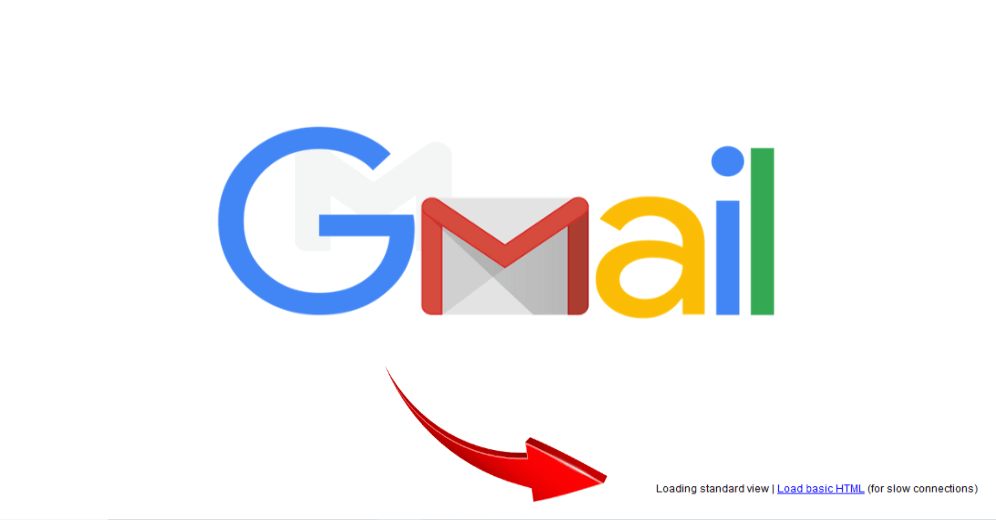📑Table of Contents:
Hey! Are you aware of the big news from Google? The basic HTML view in Gmail will be totally removed soon…after a year. So, let’s get ready and familiarize yourself with how to handle this significant change.
In this continual evolution of the digital era, Google has announced its decision to scrap the Basic HTML View of Gmail, starting January 2024. This change is significant, signifying the end of an era for a feature that has been pivotal for users seeking a simplified, fast-loading email experience.
It also brings to the forefront the need for users and enterprises alike to adapt to the ever-evolving technological landscape.

Background and Impact
The Basic HTML View has long been a respite for users with slow internet connections or those using older hardware, offering a simpler, lighter version of Gmail that loads faster and consumes less data. It has been an essential tool, especially in regions with limited internet access or less advanced technological infrastructures.
The termination of the Basic HTML View means that users will need to adapt to the standard view, which may pose challenges, particularly for those with restricted internet resources. This could potentially limit accessibility, subsequently raising questions about digital inclusivity and equality.
The shift may also impact elderly users and those who prefer minimalist digital interfaces, necessitating an exploration of alternatives.
Reasons for the Change
Google has emphasized that the decision is part of its broader strategy to offer more advanced and secure email experiences. With the standard view, users can avail themselves of numerous features and enhancements that are absent in the Basic HTML View, such as the ability to organize emails through labeling and filtering, use of chat and meet within the interface, and enhanced security features. This move is seen as a step towards consolidating user experience, focusing on a unified, feature-rich approach.
User Adaptation and Alternatives
The removal of the Basic HTML View necessitates user adaptation. Users will need to embrace more sophisticated interfaces, with organizations potentially having to invest in upgrading hardware and internet connectivity. For those seeking simplified email experiences, exploring alternative email providers offering lighter, minimalist interfaces will become crucial.
Email clients such as Outlook and Yahoo Mail offer lite versions that could serve as suitable replacements for users reliant on Gmail’s Basic HTML View.
Additionally, users can opt for third-party email clients that support POP/IMAP, allowing them to access Gmail with simplified interfaces and reduced feature sets.
Concerns and Discussions
The announcement has sparked diverse discussions and concerns among the user community, ranging from debates over digital equality to discussions on technology’s relentless march forward.
The discourse emphasizes the need for tech giants like Google to maintain a balance between innovation and inclusivity, ensuring that advancements do not alienate or marginalize users with specific needs or limitations.

Future Outlook
While the phasing out of Gmail’s Basic HTML View marks the end of an era, it also exemplifies the constant transformation inherent to the technology sector. It underscores the necessity for users to remain informed and adaptable, embracing changes while advocating for digital equity and accessibility.
Google’s focus on a more unified, advanced user experience is likely to continue, with innovations aimed at enhancing security, functionality, and interface design.
However, the tech community’s response to this change could potentially influence future decisions and developments, highlighting the importance of user feedback in shaping the technological landscape.
In the rise of social media usage, people spend more time online, using Gmail, social media accounts, YouTube, TikTok, etc. Here’s a great and interesting article on the latest social media stats that you’ll love to know.
Final Thoughts!
The discontinuation of Gmail’s Basic HTML View in January 2024 symbolizes a significant transition in the realm of digital communication. While the move aligns with Google’s objective to provide enhanced, secure, and feature-rich email experiences, it prompts reflection on the balance between technological progression and user inclusivity.
As Gmail evolves, users will need to adapt to the newer, more enriched versions. This change can potentially bring about an array of email-related issues. For instance, some users may face difficulties in receiving emails from certain platforms due to compatibility issues or stricter security protocols.
This reminds us of the common problems users have faced in receiving emails from Instagram, a situation that has caused considerable inconvenience to many. Understanding the nature of such issues can help users in adapting to the changes and troubleshooting effectively.
The ongoing discussions surrounding this development emphasize the collective responsibility of tech companies and users to foster an inclusive digital ecosystem, ensuring that technological advancements cater to diverse needs and preferences in an ever-evolving digital world. Read more about this Google update.





